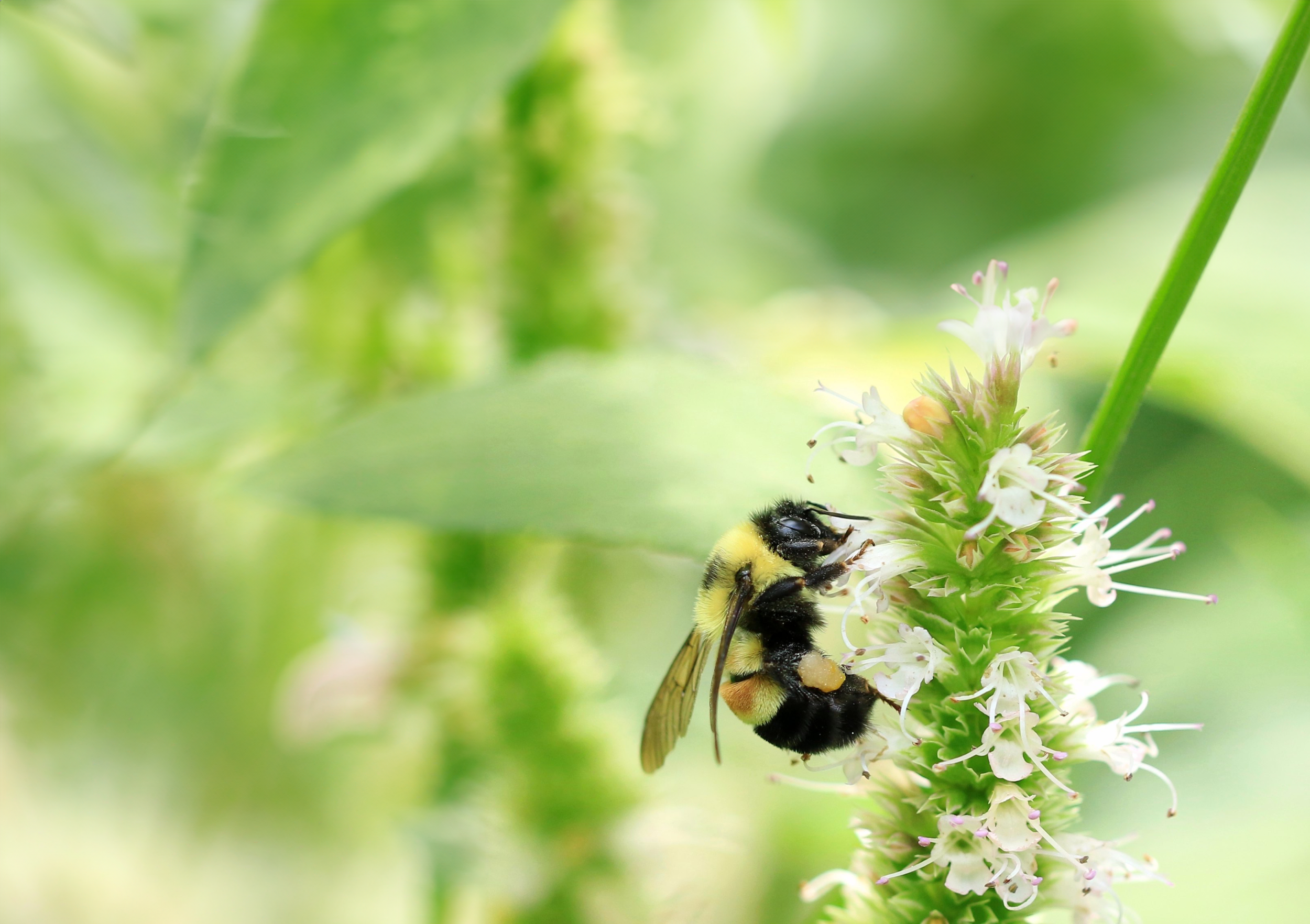Bumble Bee Watch
By Erica Place on June 7, 2024 in Blog

Rusty patch bumblebee, photo by Larry Reis
For a month or so following spring’s arrival, every bumble bee buzzing by is a queen. She — and her other fertile female siblings — were the only ones from last year’s colony to overwinter, finding refuge in an underground burrow, amongst fallen leaves or tucked away in a brush pile. Early blooming flowers, trees and shrubs provide the meals they’ll need to begin building their new queendom, which will grow throughout the summer and produce more queens destined to singlehandedly start anew the following year.
Sixteen of North America’s 46 bumble bee species call Iowa home, and at least ¼ of them are at risk of extinction due to environmental factors like lack of food resources, excessive lawn, exposure to chemicals, availability of nesting and overwintering sites, competition from honeybees and more. Bumble bees are important pollinators of both crops and native plants, and their decline can have significant agricultural and ecological costs.
Scientists are trying to gather baseline data to learn more about how bumble bee populations and ranges are changing and are asking for your help through a community science project called Bumble Bee Watch.
Bumble Bee Watch is simple: just start snapping photos anytime (and anywhere) you see a bumble bee! Upload the photos, using the website’s resources to identify the species as best you can. Scientists will double check your identification, and your sightings are added to a country-wide database that will help inform conservation decisions. It’s an easy way for you and your family to virtually care for these pollinators. Browse current Iowa sightings and set up your account at bumblebeewatch.org.
